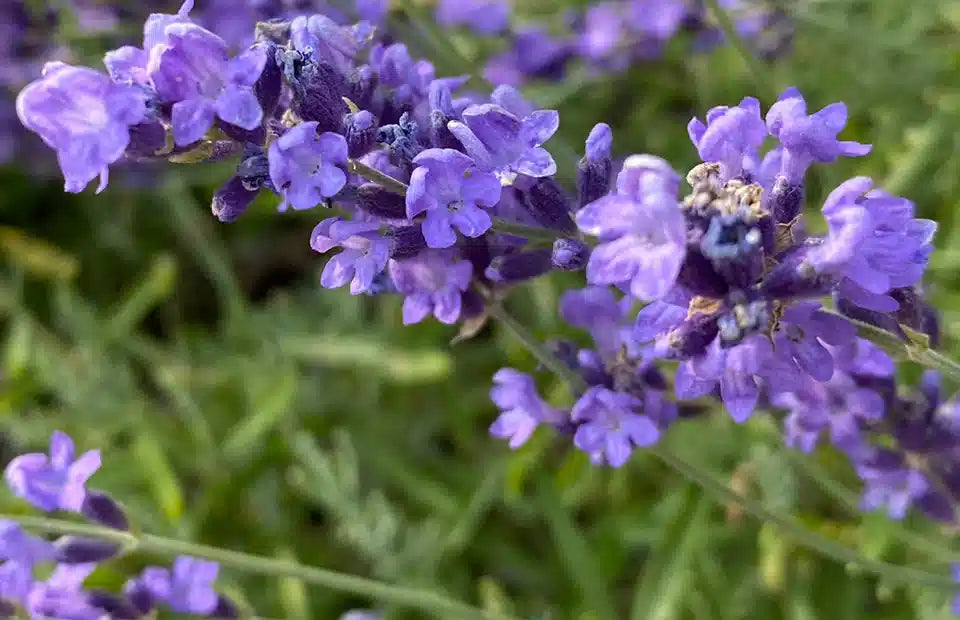
Lavandula angustifolia (also Lavandula spica or Lavandula vera; common lavender, true lavender, or English lavender (though not native to England); formerly L. officinalis) is a flowering plant in the family Lamiaceae, native to the western Mediterranean region, primarily in the Pyrenees and other mountains in northern Spain.
Lavender has been known for centuries to be one of the most versatile plants of all time, and one of the most widely used in medicine. Lavender (essential) oil is a gentle but powerful natural ingredient, with a high content of antioxidants and other natural occurring beneficial chemicals, known for its antiseptic, cicatrisant, analgesic, calming, toning, anti-inflammatory and anti-aging properties.
It's been used extensively in herbalism and aromatherapy. English lavender (Lavandula angustifolia) yields an essential oil with sweet overtones, often used in balms, salves, perfumes, cosmetics, and topical applications. Lavandula Angustifolia also has cytophylactic properties that promote rapid healing and help reduce scarring. It was used in hospitals during WWI to disinfect floors and walls, as an antiseptic and disinfectant in treating the soldiers’ wounds, and sterilizing medical equipment. Although these days it's mostly used for its fragrance in bath products, replaced for cheaper synthetic ingredients.
Lavender has traditionally been known as one of the most beautiful herbs to help support and strengthen the nervous system. It has been used to help promote a restful sleep and is known to have an uplifting effect on mood. The flowers are also used as a culinary herb, most often as part of the French herb blend called Herbes de Provence. Lavender essential oil, when diluted with a carrier oil, is commonly used as a relaxant in massage therapy. Dried lavender flowers and lavender essential oil are also used as a prevention against clothing moths, which do not like their scent.
Lavender oil is an essential oil obtained by distillation from the flower spikes of certain species of lavender. Lavender oil, which has long been used in the production of perfume, can also be used in aromatherapy. The scent has a calming effect which may aid in relaxation and the reduction of anxiety. Kashmir Lavender oil is also very famous as it is produced from the foothills of Himalayas. It may also help to relieve pain from tension headache when breathed in as vapor or diluted and rubbed on the skin. When added to a vaporizer, lavender oil may aid in the treatment of cough and respiratory infection. Lavender oil may also be used as a mosquito repellent when worn as perfume or when added to lotions or hair products.
During the early 20th century, French chemist René-Maurice Gattefossé accidentally discovered the benefits of lavender essential oil when he plunged his badly burned arm into a vat of the pure oil. The lavender soothed his pain, helped the wound to heal faster and left no scar. He shifted his focus to the properties of other essential oils and in 1937 published "Aromathérapie: Les Huiles essentielles hormones vegetables." Inspired by his work, French doctor Jean Valnet studied and used essential oils in surgery and as psychiatric medication. His work, "The Practice of Aromatherapy," brought modern aromatherapy to the English world.

